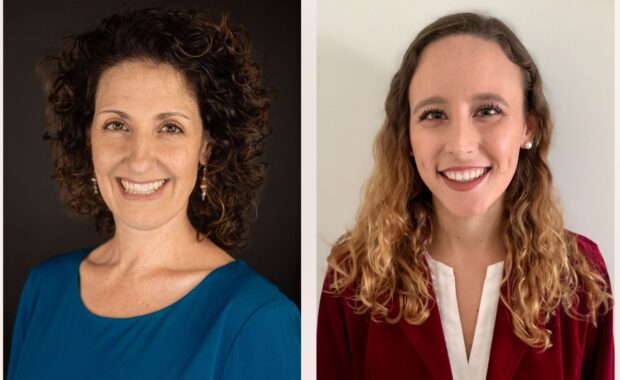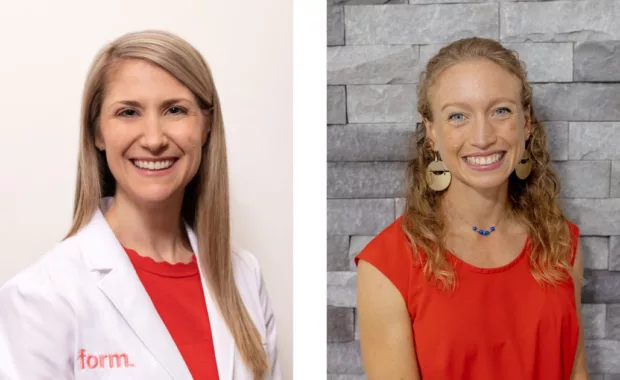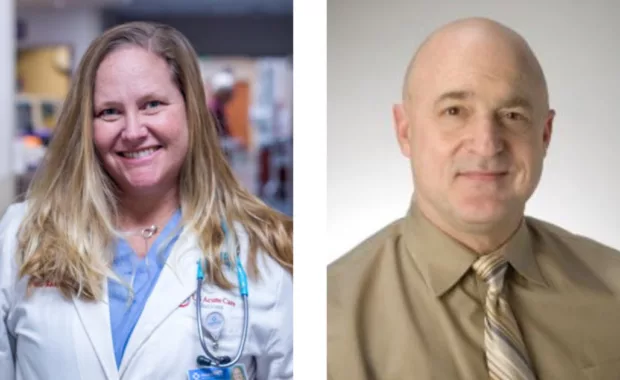Lifestyle Medicine: How to Help Your Patients Succeed
Exercise, Nutrition, Stress, and Sleep Matter
July 16, 2018
By Kate Maloney
Brad Biskup, MS, MHs, PA-C, has dedicated his career to helping people lead healthier lives. After completing a bachelor’s in exercise physiology from the University of Wyoming, a master’s in biology from Central Connecticut State University, and a master’s in health science from Quinnipiac University’s PA program, it’s safe to say Biskup is an expert in lifestyle medicine – a specialty that focuses on exercise, nutrition, smoking cessation, weight loss, and stress management to modify risk factors and prevent illnesses. He currently works at the Lifestyle Medicine Clinic at UCONN Health, holds a Lifestyle Medicine Diplomat certification from the American Board of Lifestyle Medicine, and frequently lectures on the topic. Biskup points out that the current medical system in the United States treats diseases, even though 80 percent of our diseases are preventable through a healthy lifestyle. Biskup recently participated in one of AAPA’s Huddle “Ask Me” sessions, where AAPA members can ask experts in various fields any question and receive a personal, quick response.
Joining Biskup was Dennis Muscato, MS, the co-director of the Lifestyle Medicine Education Collaborative (LMEd). LMEd offers mentoring, newsletters, free curricular resources, and recognizes Champions of Change: leaders who are advancing lifestyle medicine education in undergraduate, graduate, and residency medical programs, including allied health professions, both nationally and internationally. During their “Ask Me” session, Biskup and Muscato shared their experiences in lifestyle medicine.
Lifestyle medicine isn’t just one thing.
Biskup defines lifestyle medicine, broadly, as the art of understanding your patient’s lifestyle and giving them the tools to succeed. He and his patients examine many facets of a patient’s lifestyle: nutrition and diet, exercise, stress, and sleep.
When counseling patients in these areas of lifestyle medicine, Biskup offers the following guides.
Nutrition/diet
Focus on simple changes. Eat one-third cup of nuts or seeds per day, 30 grams of fiber, and primarily eat a plant-based diet. Any meat should have fewer than 30 percent of its total calories from fat. Drink lots of water, especially with meals.
Biskup also spends time explaining the glycemic load (GL) of food. GL combines both the quantity and quality of carbohydrates, and estimates how much the food will raise a person’s blood glucose level after consumption. He encourages eating foods with a low GL, as they will keep blood sugar levels consistent and increase overall satiety.
Exercise
Biskup describes to patients the difference between aerobic and anaerobic exercise and how to know the difference. He encourages them to use the “talk test” – whether or not they can talk while performing the activity – as a benchmark. He also works with patients to specifically define what they want exercising to accomplish. Is it to lose weight? De-stress? Or strengthen the body to decrease the risk of falling? Biskup will detail an appropriate exercise plan for each patient’s scenario.
Stress
Biskup educates his patients on the way stress impacts their bodies. He makes sure they understand both the sympathetic nervous system (flight-or-flight response) and the parasympathetic nervous system (rest-and-repose). He also encourages meditation and deep breathing exercises to manage stress.
Sleep
“The importance of sleep cannot be stressed enough,” Biskup says. He will evaluate patients for sleep apnea, when appropriate, and discusses sleep hygiene and specific tactics for patients to try.
Learn from the Blue Zones.
Many of the fundamentals Biskup practices in lifestyle medicine are echoed in Dan Buettner’s “The Blue Zone: Lessons for Living Longer from the People Who’ve Lived the Longest.” In a November 2005 National Geographic cover story, Buettner identified five areas around the world where people live longer-than-average lives: Sardinia, Italy; Okinawa, Japan; Loma Linda, California; Nicoya Peninsula, Costa Rica; and Icaria, Greece. Studying these populations, Buettner identified lifestyle characteristics that contribute to their longevity, and they are familiar to Biskup and other PAs practicing lifestyle medicine. “A vegetable-based diet is a good place to start,” Biskup says. “Okinawa, Japan has 80 percent less breast cancer than the U.S. does. The lifestyle there includes a plant-based, whole-food diet, moving naturally, supportive family and friends, and a positive outlook.”
Help patients succeed.
Different strategies work for different people, and patients come to see Biskup with different goals they are trying to reach. “The art of lifestyle medicine,” Biskup shares, “is finding the tools that your patient can use and be compliant with. When someone likes using apps, I’ll help them find something that works for them – MyFitnessPal, FitBit, Lose It, or just the pedometer on their phone.” When his patients do reach their goals or new accomplishments, Biskup encourages them to celebrate. He finds that lab results can be hard-and-fast accomplishments. “When you use lab results as an indicator of success, it is very motivating for you and your patients.”
Biskup knows part of his job as a lifestyle medicine PA is to provide resources to his patients. In addition to “The Blue Zone,” Biskup also recommends Dr. Michael Greger’s nutritionfacts.org and his book “How Not to Die.” When it comes to food-related resources, Biskup recommends The Mayo Clinic Diet. Biskup finds the diet is easy to follow and contains a lot of simple recommendations. “It’s not about being perfect, but eating lots of healthy foods to decrease the unhealthy foods. If it goes bad in three days, it’s good for you!”
Listen to your patients.
“Just listening to your patients helps more than anything,” Biskup maintains. “I try to make their healthcare personal.” Biskup knows that by listening and understanding their goals, he is already closer to helping his patients attain them. Whether the goal is taking 10,000 steps a day or controlling their cholesterol without medication, Biskup creates a unique “to do” list for each patient. “I always try to keep it positive. It’s amazing when you put a lot of positive things around your patients – how well they do. The more personal you make it, the more successful your patients will be.”
Encourage practice of lifestyle medicine.
Dennis Muscato works each day to increase the number of programs that are offering lifestyle medicine curriculum. While LMEd’s initial focus was on medical schools, they have already achieved 50 percent engagement and see only continued progress. With their success, they have received many requests from PA students and program faculty for lifestyle medicine programs that are tailored for the PA role. LMEd recognizes Champions of Change – a showcase of lifestyle medicine education programs at various stages of development and implementation. Recently, Sarah-Ann Keyes, MS, PA-C, of Baylor University’s PA program, was highlighted as one of LMEd’s Champions of Change.
Muscato also recommends leveraging social media to highlight the role PAs play in lifestyle medicine, or to start a lifestyle medicine club or student interest group. The more PAs and PA students interested in lifestyle medicine, the more programs will teach it.
Read the full Ask Me session online.
Additional Resources
-
- The American College of Lifestyle Medicine offers CMEs and networking opportunities.
- Lifestyle Medicine Education Collaborative
- Biskup’s lifestyle medicine presentations – including those on glycemic load, weight loss, and reducing cardiovascular and cancer risk – can be accessed through Huddle’s library.
This article was prompted by a great conversation on Huddle during an Ask Me session. These week-long discussions bring together PAs who are experts in their field – and who will answer your questions on important clinical or career topics. You can read past Ask Me Sessions on Huddle – just login using your normal AAPA username and password.
Kate Maloney is AAPA’s senior manager of corporate communications. Contact her at [email protected].
Thank you for reading AAPA’s News Central
You have 2 articles left this month. Create a free account to read more stories, or become a member for more access to exclusive benefits! Already have an account? Log in.



